3
marzoWhat's The Current Job Market For Good Robot Vacuum Cleaner Professionals?
The Silent Housekeeper: Finding the Right Robot Vacuum Cleaner for a Spotless Home
In today's hectic world, time is a precious commodity. Household tasks, while essential, typically are up to the bottom of the top priority list. Get in the robot vacuum-- a marvel of modern convenience designed to recover your time and maintain a clean home with very little effort. No longer a futuristic dream, robot vacuums have ended up being significantly advanced, efficient, and accessible, changing the method we approach floor cleaning.
But with a wide variety of models flooding the marketplace, browsing the world of robot vacuums can feel frustrating. What functions genuinely matter? How do you pick one that suits your particular needs and home? This article will dive into the essential aspects of choosing a "great" robot vacuum, equipping you with the knowledge to make an informed decision and welcome a silent, efficient housekeeper into your home.
What Defines a "Good" Robot Vacuum Cleaner?
The definition of a "good" robot vacuum extends beyond mere suction power. It includes a combination of factors that add to effective cleaning, ease of usage, and long-term worth. Here are the crucial elements to consider:

1. Navigation and Mapping Prowess:
A robot vacuum's capability to browse your home wisely determines its cleaning performance and coverage. There are several navigation innovations used, each with its own strengths:
- Random Navigation: These entry-level models move in a seemingly random pattern, bouncing off obstacles until the battery runs low. While inexpensive, they can be less efficient, missing areas or cleaning locations multiple times.
- Systematic Navigation (Row-by-Row/Zig-Zag): These robots tidy in straight, parallel lines, guaranteeing more methodical protection. They are generally more effective than random navigation models.
- Smart Mapping with SLAM (Simultaneous Localization and Mapping): This innovative technology, typically using LiDAR (Light Detection and Ranging) or camera-based systems, enables the robot to create an in-depth map of your home. This map makes it possible for:
- Efficient Path Planning: Optimized cleaning paths for faster and more total protection.
- Zoned Cleaning: Target specific rooms or locations for cleaning directly from an app.
- Virtual Walls and No-Go Zones: Define limits to prevent the robot from entering specific areas, like fragile carpets or pet bowls.
- Multi-Floor Mapping: Some advanced designs can store maps of several floors, ideal for multi-story homes.
2. Suction Power and Cleaning Performance:
The main function of a robot vacuum cleaners uk vacuum is, naturally, cleaning. Suction power is a crucial indicator of its capability to raise dirt, dust, and particles from numerous floor types.
- Floor Type Matters: Homes with mainly hard floorings (wood, tile, laminate) may not need the most effective suction, while homes with carpets and rugs will benefit from greater suction to successfully draw out dirt and pet hair embedded in the fibers.
- Brush Roll Design: The brush roll below the robot plays a crucial role in agitating dirt and guiding it towards the suction nozzle. Various brush roll designs are optimized for different floor types. Some feature bristles for carpets, while others use rubber blades or a combination for hard floorings and pet hair management.
- Specialized Features: Look for functions like "carpet increase," where the robot automatically increases suction when it detects carpet, and edge cleaning modes, using side brushes to efficiently clean along walls and baseboards.
3. Battery Life and Coverage Area:
Battery life determines the length of time your robot vacuum can clean up on a single charge and, as a result, the size of the area it can cover.
- Consider Your Home Size: Larger homes will need robots with longer battery life. Some models can run for 90-120 minutes or more, while others may offer 60 minutes or less.
- Auto-Recharge and Resume: Many robot vacuums include auto-recharge. When the battery is low, they automatically return to their charging dock, recharge, and then resume cleaning from where they left off. This is especially beneficial for bigger homes.
4. Smart Features and Convenience:
Modern robot vacuums frequently come geared up with a variety of smart functions that enhance their functionality and user experience:
- App Control: Most smart robot vacuums can be managed through a mobile phone app, allowing you to:
- Start, stop, and pause cleaning cycles remotely.
- Schedule cleaning times.
- Monitor cleaning progress and battery status.
- Access maps, set zones, and virtual walls (for mapping designs).
- Adjust suction power and cleaning modes.
- Voice Control Integration: Compatibility with voice assistants like Amazon Alexa or Google Assistant enables hands-free control through voice commands.
- Mopping Functionality: Some robot vacuums are hybrid gadgets, integrating a mopping function. These frequently feature a water tank and a mopping pad that drags behind the vacuum, damp-mopping difficult floors.
- Challenge Avoidance: Advanced models utilize sensing units to identify and avoid barriers like furnishings legs, pet bowls, and cable televisions, lessening the chances of getting stuck or bumping into objects.
- Dustbin Capacity and Ease of Emptying: A bigger dustbin reduces the frequency of clearing. Consider the ease of eliminating and emptying the dustbin - some are simpler and less unpleasant than others.
- Filtering System: HEPA filters are useful for allergic reaction sufferers, as they trap fine dust particles and irritants.
- Noise Level: Robot vacuums vary in noise levels. If noise level of sensitivity is an issue, search for designs that are advertised as quieter.
Choosing the Right Robot Vacuum for Your Needs:
Selecting the perfect robot vacuum depends upon your specific home environment and cleaning top priorities. Consider these aspects:
- Your Floor Type:
- Predominantly Hard Floors: Focus on designs with effective systematic navigation, good robot vacuum (view ucut.it) suction, and think about a vacuum-mop hybrid for added floor cleaning abilities.
- Carpets and Rugs: Prioritize high suction power, a brush roll designed for carpets, and potentially features like carpet increase.
- Mixed Flooring: Look for flexible designs that carry out well on both tough floors and carpets, preferably with automatic vacuum and mop robot floor type detection and suction change.
- Home Size and Layout:
- Apartments or Small Homes: A basic design with random or systematic navigation and standard battery life may suffice.
- Larger Homes or Multi-Level Homes: Invest in a robot with smart mapping, long battery life, auto-recharge and resume, and potentially multi-floor mapping abilities. Think about having multiple robotics for different floors or manually moving one robot between levels.
- Pet Owners: Pet hair is a common cleaning obstacle. Try to find robot vacuums specifically designed for pet owners, characterized by:
- Strong Suction: To efficiently select up pet hair and dander.
- Tangle-Free Brush Rolls: To reduce hair wrap and keep cleaning performance.
- Larger Dustbins: Pet hair can quickly fill dustbins.
- HEPA Filters: To trap pet dander and irritants.
- Budget:robot vacuum that vacuums and mops vacuum costs range significantly. Establish your budget and prioritize functions based upon your requirements.
- Entry-Level: Basic cleaning performance, random or organized navigation, suitable for smaller sized areas.
- Mid-Range: Improved navigation, more powerful suction, more smart functions, great balance of efficiency and cost.
- High-End: Advanced navigation (LiDAR mapping), premium features, remarkable cleaning efficiency, frequently with self-emptying dustbins and more advanced app control.
Leading Robot Vacuum Brands to Consider:
While countless brands exist, some regularly get high scores and are understood for their quality and efficiency. Credible brands consist of:
- iRobot Roomba: A leader in the robot vacuum market, known for reliability and a large range of designs catering to different budgets and needs.
- Shark: Focuses on powerful suction and ingenious brush roll designs, typically mastering pet hair elimination.
- Eufy (by Anker): Offers a balance of functions and cost, supplying good worth for cash.
- Roborock: Known for innovative technology, especially LiDAR navigation and extensive app features, typically using high efficiency at competitive costs.
- Samsung: Integrates smart home technology and trendy styles, with models using good performance and functions.
- Ecovacs: Provides a wide range of designs, consisting of those with sophisticated mopping capabilities and obstacle avoidance.
Keeping Your Robot Vacuum:
To ensure your robot vacuum runs efficiently and lasts longer, regular upkeep is vital:
- Empty the Dustbin Regularly: Ideally after each cleaning cycle or as needed.
- Clean the Brush Roll and Side Brushes: Remove hair and debris that can get tangled around the brushes.
- Clean or Replace Filters: Follow maker recommendations for filter maintenance.
- Clean Sensors Clean: Dust and debris can obstruct sensors, affecting navigation.
- Examine for Obstructions: Periodically check wheels and moving parts for any blockages.
Conclusion:
A great robot vacuum is more than just a gizmo; it's a financial investment in time-saving benefit and a robotic cleaner and mop, much healthier home. By understanding the key functions, considering your specific needs and home environment, and doing a little research, you can with confidence select a robot vacuum that will become your relied on quiet housekeeping partner, freeing you to concentrate on what matters most. Let your robot vacuum take care of the floors, so you can take back your time.
Regularly Asked Questions (FAQs) about Robot Vacuum Cleaners:
Q1: Are robot vacuum worth the financial investment?
A: For many, yes. Robot vacuums provide considerable convenience by automating a repetitive task. They are exceptional for daily maintenance cleaning, keeping floorings consistently tidier and minimizing the requirement for frequent manual vacuuming.
Q2: How frequently should I run my robot autonomous vacuum?
A: It depends upon your needs and lifestyle. Daily cleaning is perfect for high-traffic locations or homes with pets. For less hectic families, running it a few times a week might suffice. Scheduling is an excellent feature to automate this process.
Q3: Can a robot vacuum entirely change a traditional vacuum?
A: While robot vacuums are outstanding for everyday surface cleaning, they might not totally replace a conventional vacuum cleaner for deep cleaning jobs, reaching tight corners, or cleaning upholstery. They are best deemed a complement to, instead of a full replacement for, conventional vacuuming.
Q4: Do robot vacuums work well on dark carpets?
A: Some older or less sophisticated robot vacuums can have problem detecting dark carpets, often misinterpreting them for ledges and preventing them. Nevertheless, numerous modern models are created to browse dark surfaces successfully. Inspect item specs and evaluations if you have dark carpets.
Q5: How long do robot vacuum normally last?
A: The life-span of a robot vacuum depends upon elements like brand name quality, frequency of use, and upkeep. Normally, a properly maintained robot vacuum can last for numerous years, typically ranging from 3 to 7 years. Battery life may degrade with time and require replacement eventually.


Reseñas